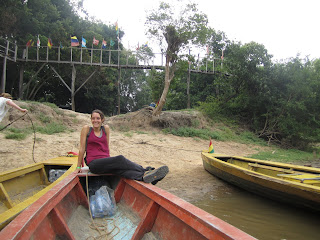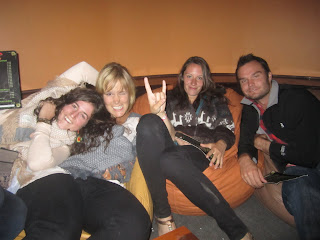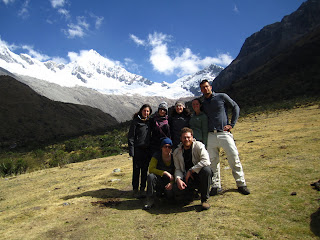
How did we get all the way to the border you ask? By the infamous death train of course. 16 hours bobing slowly along the tracks was a nice break from all of our recent activities. The difficult border crossing into Brazil was amplified by our non-existent knowledge of Portuguese. Along with an older Austrailian couple, we managed to get a cab and bus without even having the right currency. After a long 7 hour bus ride, we found ourselves in Campo Grande, the gateway into the Pantanal.

The "death train"
Not wasting any time, we booked a 4 day trip into the Pantanal the next morning. We opted to camp since it is cheaper and far more exciting. "Camping" in the Pantanal consists of sleeping in a circular room with a bunch of hammocks that all meet at a beam in the center. There was also a dining room, outdoor showers, and bathroom that housed the world's largest toads. That was base camp, and from there we ventured out on daily excursions.

"Camping"
Our first activity after meeting our kooky guide Gabriel was a night safari. We spotted several armadillo, caimen, deer, and capybera. The next day we woke up early and went on a 3 hour nature walk. We saw a variety of exciting birds, including some toucans, macaws, kingfishers, and the famous embratur. We also spotted raccoons (similar to their garbage digging American brothers, but not the same) and many howler monkeys. After a filling lunch of rice and beans, the group set out for a river boat tour. While the jaguars were feeling a bit shy and did not come down to the waters edge to say hello, the scenery still made for a great trip. After a nice dinner of rice and beans, we retired to our hammocks.

Strangle trees on our nature walk

Embratur, the symbol of the Pantanal

Plate of tasty Pirahna
The morning we got up and headed out on a jeep safari to try and spot some more crazy critters. In addition to the animals listed above, we also saw otters, an emu, and a big snake. After indulging in a heaping plate of rice and beans, we set out to try our luck again at catching pirahna. Now experts at this sport, we caught enough to add to the usual repitoire of rice and beans (Laura spared her pirahna's life and threw him back in the water). Saving the best for last, we ended our Pantanal experience with a leisurely horseback ride.

Riding through the water










































